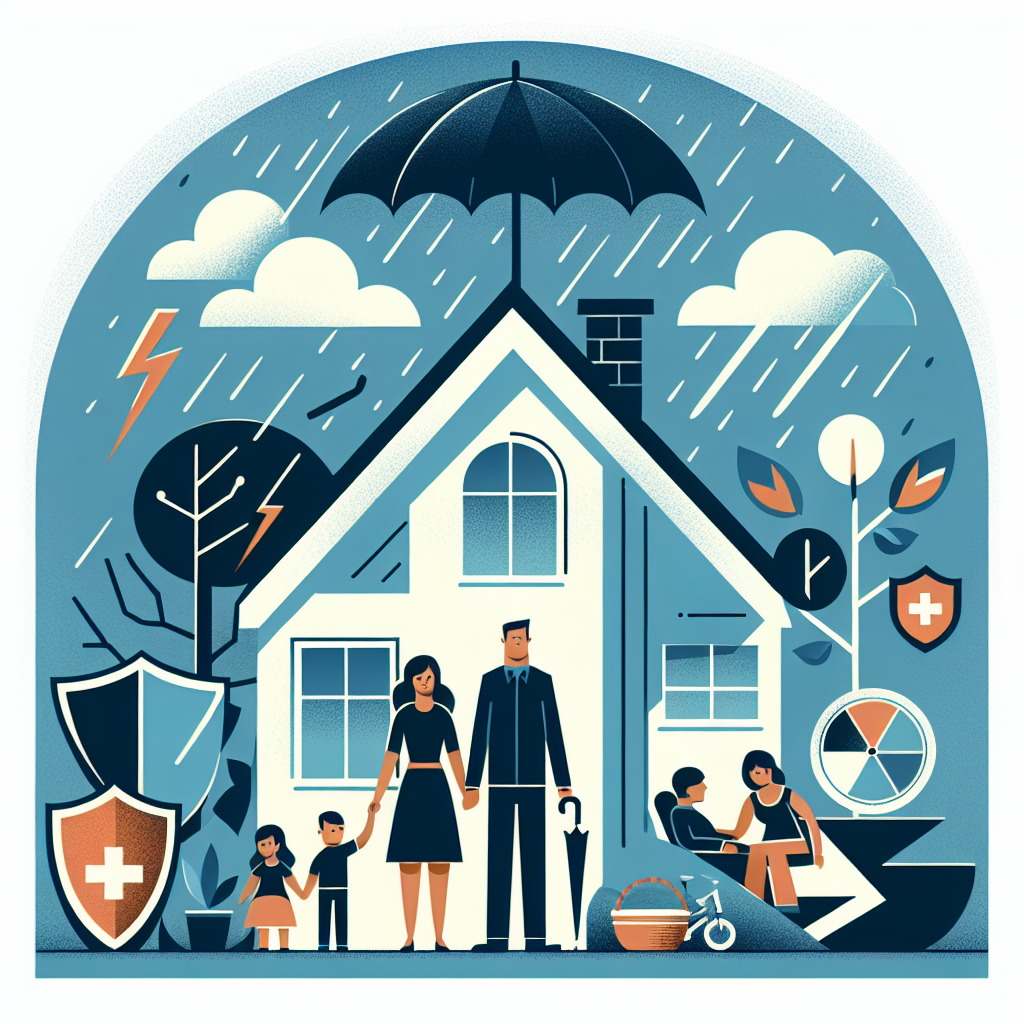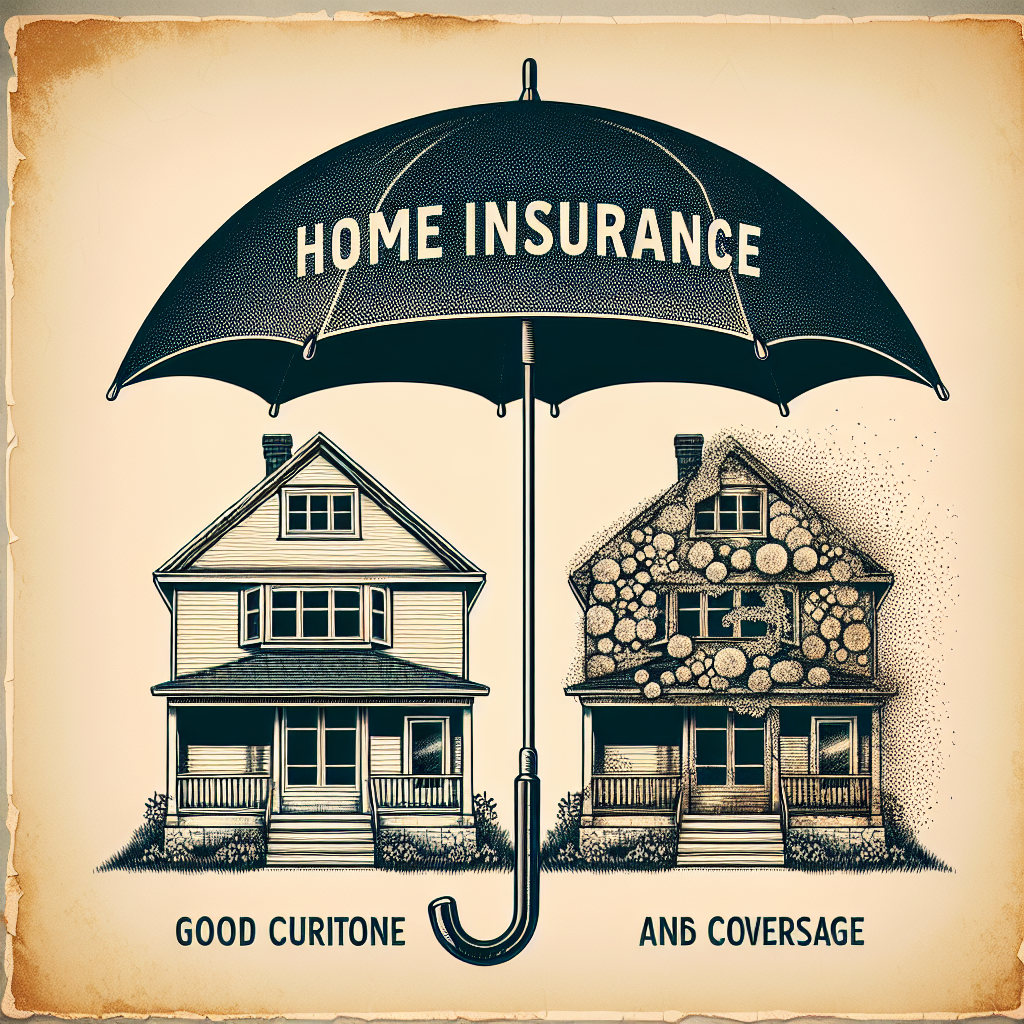Filed under Home Insurance on
What Is Personal Liability Coverage in Home Insurance

Accidents have a way of turning ordinary days into expensive headaches. A guest trips on your steps, your kid’s errant baseball shatters a neighbor’s window, or a social media post triggers a defamation claim. If you own or rent a home, personal liability coverage in home insurance is the quiet safeguard designed to step in when someone claims you caused injury or property damage. Understanding how it works—and how much you need—can be the difference between a brief detour and a major financial setback.
What It Is and How It Protects You
At its core, personal liability coverage in home insurance pays for covered claims when you’re legally responsible for causing bodily injury or property damage to others. It typically covers two big buckets: the cost to defend you in court and any settlements or judgments up to your policy limit. It travels with you beyond your property line, so incidents away from home—like a mishap at the park—can still be covered.
What It Typically Pays For
- Lawsuits alleging you or a household member’s negligence caused bodily injury, such as a slip-and-fall on your walkway.
- Property damage to others, such as a child accidentally damaging a neighbor’s fence or window.
- Incidents involving your pets, including many dog bite claims, subject to policy terms and any breed restrictions.
- Legal defense costs, including attorney fees and court costs, often in addition to your liability limits.
- Host liquor liability for social (non-commercial) gatherings, if a guest is injured and claims you were negligent.
- Personal injury claims like libel or slander, when that coverage is included or endorsed onto your policy.
What It Usually Does Not Cover
- Intentional acts and expected or intended injury.
- Auto-related liability (that’s for your auto policy) and many motorized vehicle incidents, including certain e-bikes and recreational vehicles unless specifically covered.
- Business-related liabilities (you’ll need separate business coverage or endorsements).
- Damage to your own property or injuries to household residents.
- Professional services, contract disputes, or punitive damages in many jurisdictions.
- Certain exposures excluded by endorsement, such as communicable disease, depending on the insurer.
Why This Coverage Matters More Now
Liability claims have grown more expensive over the past decade, driven by medical inflation, rising legal defense costs, and larger jury verdicts—sometimes called social inflation. Insurance Information Institute and industry loss data consistently show severity trending higher, and even common incidents like dog-related injuries can result in large settlements. In recent years, the average cost of a dog bite claim has hovered well above the tens of thousands of dollars, according to multiple insurers and industry groups.
At the same time, our lives have expanded online. A heated post or product review can morph into an allegation of libel or defamation. Many homeowners policies offer a “personal injury” endorsement for this; some modern policies include it by default. As financial stakes climb, regularly reviewing personal liability coverage in home insurance has become a smart annual habit.
How Much Coverage Should You Carry?
Choosing limits for personal liability coverage in home insurance comes down to protecting your present assets and your future income. Standard limits start around $100,000, but many homeowners and renters select $300,000 or $500,000, and some go higher.
A Practical Rule of Thumb
- List your assets: home equity, investments, savings, and valuable property.
- Consider your future earnings: high earners or those with strong earning potential face more to lose.
- Match or exceed that total with your liability limits, then consider an umbrella policy for extra protection.
For many households, $300,000 to $500,000 is the starting point, with an umbrella policy adding $1 million or more of additional liability protection above your home and auto policies. Premiums for higher limits are often surprisingly modest compared to the expanded protection.
The Umbrella Policy Advantage
A personal umbrella liability policy sits on top of your home, auto, and sometimes other recreational policies, adding an extra layer—typically starting at $1 million. It can broaden coverage and provide additional defense protection once your underlying home or auto limits are exhausted. Expect your insurer to require certain minimum underlying limits (often $300,000 on your home liability) to qualify.
Umbrellas are especially valuable if you have higher-risk exposures: a swimming pool or trampoline, a long daily commute, teen drivers, frequent entertaining, a high-profile job, or substantial assets. The typical cost per $1 million of umbrella coverage is often a few hundred dollars annually, though it varies by state and risk factors.
Key Components Inside Your Policy
Understanding what personal liability coverage in home insurance includes—and does not include—helps you make confident decisions. These are the core moving parts:
Liability to Others
- Bodily injury: Medical bills, lost wages, and pain and suffering when you are legally liable.
- Property damage: Repair or replacement when you damage someone else’s property.
- Defense costs: Attorney fees, expert witnesses, court expenses, and settlements or judgments. Many policies cover defense costs in addition to the liability limit, though policy language varies.
Medical Payments to Others
Separate from liability, this coverage pays small medical expenses for guests regardless of fault. It aims to handle minor injuries quickly and avoid litigation. Common limits range from $1,000 to $5,000 or more. Because it is “no-fault,” it can help defuse situations early.
Supplementary Payments and Extras
- Loss of earnings if you must attend trials at the insurer’s request (subject to policy limits).
- First aid expenses at the time of the incident.
- Post-judgment interest and other court-related costs where applicable.
Important note: Liability coverage typically has no deductible. Your property deductible applies to damage to your own home, not to liability claims against you.
Real-World Scenarios and How a Claim Unfolds
Scenario 1: Slip-and-Fall
A delivery driver slips on your icy front steps and fractures a wrist. They file a claim alleging negligence. Your insurer investigates, hires defense counsel if needed, and may settle or defend the case. Medical bills and lost wages could quickly eclipse tens of thousands of dollars. Your policy responds up to your limit, with defense costs typically covered in addition.
Scenario 2: Dog Bite
Your dog nips a neighbor’s child. Even a minor bite can lead to medical treatment and scar revision. Dog-related claims are among the most frequent liability events for homeowners. Depending on your insurer’s underwriting rules and any breed restrictions or prior bite history, coverage may apply, and your premium could change at renewal.
Scenario 3: Social Media Defamation
A local contractor alleges a review you posted cost them business and sues for defamation. If your policy includes a personal injury endorsement, defense and potential settlements may be covered, subject to policy terms and exclusions.
What the Claims Process Typically Looks Like
- Report the incident promptly and document details: photos, time, and witnesses.
- Do not admit fault; cooperate with your insurer’s investigation.
- Your insurer assigns an adjuster; if litigation ensues, they appoint defense counsel.
- Medical payments may address minor injuries; larger disputes shift to liability coverage.
- Settlement negotiations or trial follow; payments are made up to your limit or as the court orders.
- If your home policy limit is exhausted and you carry an umbrella, the umbrella can step in next.
Special Situations That Change Your Risk
Renters and Condo Owners
HO-4 renters and HO-6 condo policies include a liability section similar to a homeowners policy. You might not own the building, but your actions can still lead to injuries or damage to others. Even if you think “the association covers it,” that usually applies to common elements, not your personal liability. Many renters and condo owners select $300,000 or more in limits, especially in dense urban environments where claims can escalate. Different policy types still rely on personal liability coverage in home insurance to protect your finances if someone is hurt or claims you caused damage.
Pools, Trampolines, and Play Structures
These raise your risk profile significantly. Insurers may require fencing, self-latching gates, or safety nets and can charge higher premiums. An umbrella policy is often recommended if you have any of these features.
Home-Based Businesses
Running a business from home can create liability exposures that a standard homeowners policy won’t cover. Client visits, product liability, and professional errors typically require separate business insurance or a specific endorsement. Ask your agent how your policy treats business pursuits, increased foot traffic, and inventory.
Short-Term Rentals and House Swaps
Hosting on short-term rental platforms or regularly renting out rooms can trigger exclusions unless you secure appropriate endorsements or a landlord-type policy. Many carriers consider these activities commercial. Before your first booking, confirm exactly how your insurer treats short-term rentals.
Teen Drivers, E-Bikes, and Recreational Vehicles
Auto liability belongs on your auto policy, but personal liability can still be implicated by non-auto incidents. E-bikes and scooters straddle policy lines; coverage depends on bike power, speed, and local laws. Recreational vehicles, boats, and jet skis usually require dedicated liability coverage due to size or horsepower thresholds. Clarify what your home policy includes, excludes, or requires endorsements for.
Keeping Premiums Reasonable Without Cutting Protection
While you can’t control every risk, you can demonstrate that your household is a careful one. Insurers notice—and price—risk management.
- Maintain your property: Fix loose railings, repair cracked walkways, improve lighting, and clear ice and snow.
- Secure your yard: Install and maintain pool fencing and self-latching gates; lock trampolines; store tools safely.
- Manage pets responsibly: Obedience training, secure enclosures, and clear signage can reduce incidents.
- Be a thoughtful host: Mind guest safety, avoid overserving alcohol, and provide non-slip mats and lighting.
- Think before you post: If you add personal injury coverage, use it as a safety net, not a license to defame.
- Bundle and increase deductibles on property coverage: While liability has no deductible, higher deductibles on the property portion can lower overall premiums, as can bundling home and auto.
How to Read Your Policy and the Right Questions to Ask
Policy language varies, and small words can carry big consequences. Ask your agent or insurer for plain-language explanations and confirm details in writing. In particular, clarify how personal liability coverage in home insurance treats defense costs, exclusions, and broader personal injury protection.
- What is my liability limit, and is defense cost outside the limit?
- Do I have personal injury (libel, slander, invasion of privacy) coverage?
- Are there any dog breed or animal restrictions? How about a prior bite?
- How does my policy treat e-bikes, scooters, or small watercraft?
- Am I covered for short-term rentals, house swaps, or home-based businesses?
- Does my insurer offer higher limits or recommend an umbrella policy?
- Are there any new exclusions added at renewal (e.g., communicable disease) I should know about?
Myths and Misconceptions to Avoid
- “If it happens off my property, I’m not covered.” Most policies follow you worldwide for personal activities, subject to exclusions.
- “Medical payments will take care of everything.” Med pay is for small, no-fault expenses. Serious claims rely on liability coverage and legal defense.
- “Renters don’t need liability insurance.” You can be sued for injuries or damage you cause anywhere, even if you don’t own the building.
- “Umbrella policies are only for the wealthy.” They’re cost-effective protection for middle-income households with assets and future earnings to protect.
- “All policies are the same.” Definitions, exclusions, and endorsements vary widely. Read your policy and ask questions.
Shopping Tips: Getting the Right Policy at the Right Price
When you compare policies, look beyond the premium. Pay attention to limits, endorsements, and how claims are handled. Comparing personal liability coverage in home insurance across multiple carriers can reveal meaningful differences.
- Compare limits and defense-cost language side by side.
- Ask about personal injury coverage and whether it’s built-in or an add-on.
- Disclose risk factors upfront (trampoline, pool, dog, short-term rental). Surprises at claim time are costly.
- Bundle home and auto for potential discounts and easier umbrella placement.
- Check claim satisfaction scores and financial strength ratings from independent agencies.
- Review your policy annually or after major life changes: marriage, renovations, new pets, or starting a business.
Expert and Industry Insights
Insurance trade groups and consumer advocates emphasize two themes: liability claim severity continues to climb, and legal defense costs can be as impactful as settlements. Insurers have responded with modernized policy language, updated underwriting for certain dog breeds and home features, and expanded availability of personal injury endorsements. Carriers and agents increasingly recommend higher base liability limits and umbrellas because the incremental premium is often small relative to the additional protection.
Consumer watchdogs also note that transparency is improving, but policyholders still need to ask pointed questions. The best outcomes come from candid discussions with your agent, documented safety measures, and deliberate limit selection based on your total financial picture.
Common Pitfalls and How to Avoid Them
- Underinsuring: Stopping at $100,000 when your assets and income would suggest $500,000 and an umbrella.
- Assuming coverage: Hosting short-term rentals without confirming endorsements or a separate policy.
- Ignoring endorsements: Skipping personal injury coverage despite active social media or public-facing roles.
- Letting maintenance slide: Delayed repairs and poor lighting can be liability magnets.
- Not documenting: Failing to report incidents promptly or to keep basic maintenance and safety records.
Quick Checklist Before You Renew
- Update your liability limit to match your current assets and future earnings.
- Add an umbrella policy if your risk profile has grown.
- Confirm dog, pool, trampoline, or short-term rental disclosures and safety measures.
- Review personal injury coverage and consider adding it if not included.
- Verify how defense costs are handled and whether they erode the limit.
- Ask about discounts for bundled policies or home safety upgrades.
Bottom Line
Personal liability coverage is the quiet powerhouse of your homeowners, renters, or condo policy. It’s designed to defend you and pay covered claims when the unexpected happens and someone is hurt or their property is damaged. The stakes have risen—medical bills, legal fees, and verdicts are larger than they were a decade ago. Aligning your limits with your financial life, adding personal injury coverage, and considering an umbrella are practical steps that deliver outsized peace of mind.
If you haven’t reviewed your policy recently, now is the time. The right personal liability coverage in home insurance should reflect your real-world risks, today’s legal environment, and your long-term goals. Ask questions, compare options, and choose limits that let you focus on living—without looking over your shoulder.





